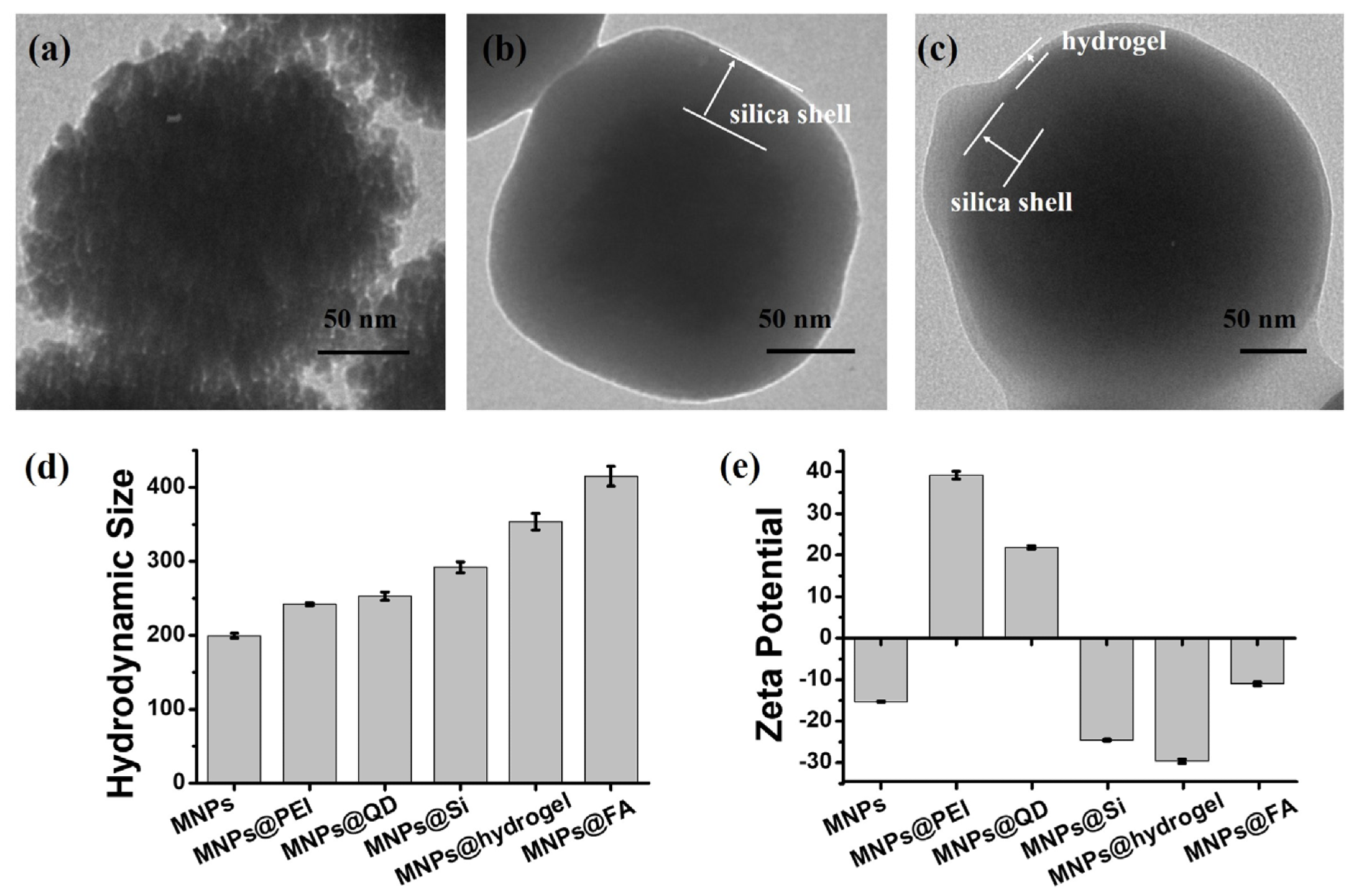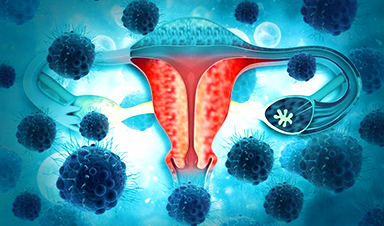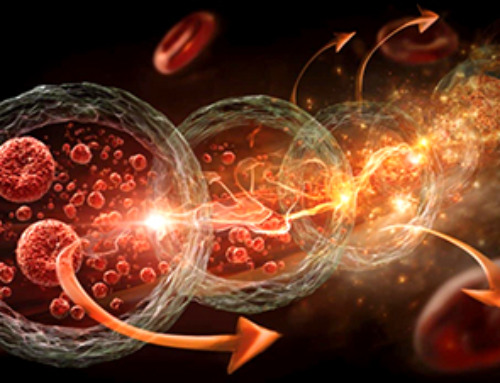Novel cancer research has emerged from the journal, Biosensors, to develop early diagnosis methods for ovarian cancer. With the advancement in nanotechnology, this research has included identifying circulating tumor cells through the use of nanoparticles in a simple, cost-effective and simple approach for ovarian cancer.
What are Circulating Tumor Cells?
Metastasis is a very significant factor in cancer progression and with this comprising cancer-spread into secondary sites from the primary site, it can result in cancer-related mortality as well as approximately 90 % of treatment failures. However, the advancement in biomedical research for detecting cancer formation and metastasis at an earlier stage would enable earlier excision of tumors and reduce mortality rates.
Circulating tumor cells (CTCs) hold an important role in metastasis, as these cancer cells are released into the bloodstream from the primary cancer site. However, while there is a large number of CTCs are released into the circulation, most are eliminated in this area, while a limited number survive and invade organs causing metastasis of primary cancer. Additionally, only a small number of CTCs can be detected in the blood as most escape immune surveillance.

Figure 1. Schematic illustration of the process of CTC separation and identification by folic acid (FA)-modified fluorescent-magnetic nanoparticles (MNPs@FA). © Pan, Y., et al (2022)
Significance
The significance of CTCs lies within their use as a biomarker for possible detection of cancer; this would enable earlier diagnosis of the disease and aid in comprehensive treatment plans for physicians.
As CTCs are derived from the primary tumor mass, they hold genetic information. Their entrance into the circulation at an early stage of malignancy enables their use for diagnostic purposes.
This has led to research focusing on capturing CTCs and isolating them for further analysis, an approach that could potentially be an alternative to invasive biopsies used for diagnosis as well as within a therapeutic strategy in order to monitor treatment efficacy and guide prognoses.
However, the challenge of detecting CTCs as well as isolating them is still high for researchers.

Figure 2. Transmission electron microscope (TEM) images of (a) MNPs@QD, (b) MNPs@Si, and (c) MNPs@hydrogel. Comparison of hydrodynamic size (d) and zeta potential (e) by the DLS and zeta potential measurement for the nanoparticles with different modifications. All data are expressed as the mean ± stand deviation, n = 3. © Pan, Y., et al (2022)
Nanotechnology CTC Research
Innovative researchers have developed a simple and cost-effective approach for isolating CTCs from ovarian cancer samples. This is significant as this type of cancer is considered to be one of the most dangerous diseases found in women worldwide.
The hydrogel utilized illustrated effective antifouling characteristics against peripheral blood mononuclear cells (PBMCs) and the use of this strategy resulted in efficient capturing of SK-OV-3 cells, with a 95.8%. Additionally, this simple but effective approach was able to isolate 2–12 CTCs from 10 blood samples belonging to ovarian cancer patients.

Figure 3. (a) A fluorescent image of MNPs@FA showing a stable fluorescent signal. (b,c) SEM images of an SK-OV-3 cell captured by MNPs@FA with a sufficient number of nanoparticles on the cell surface. (d) Fluorescent images of SK-OV-3 cells captured by MNPs@FA (red) with immunostaining of anti-PanCK-555 (orange) and Hoechst 33,342 (blue). (e) Fluorescent images of SK-OV-3 cells captured by MNPs@FA (red) with immunostaining of anti-CD45-488 (green) and Hoechst 33,342 (blue). © Pan, Y., et al (2022)
Future Outlook
The researcher’s innovative approach to using circulating tumor cells for early diagnosis of cancer such as for ovarian cancer may be revolutionary for the field of cancer research, as this type of cancer is known as the ‘silent killer’ and is usually lacking in symptoms until a late stage. Most women with this form of cancer progress into the advanced stages without many symptoms and this can result in ineffective treatment, poor prognoses, and high mortality rates.
Ineffective treatment for ovarian cancer is an area of cancer research which requires further investigation, as surgical procedures do not always have the ability to remove the metastasized tumor and with chemotherapy resistance and recurrence, the survival rates of advanced ovarian cancer is devastatingly poor.
The use of an innovative approach, which enables early diagnosis of an almost symptom-less cancer, can be an effective strategy to make informed decisions about a patient’s treatment plan, while also increasing prognoses and survival.
There are still challenges to this research, such as the volume of blood samples that may be required for the detection of CTCs, and for further analysis of the CTCs themselves, innovative strategies such as cell culture may be required, as opposed to further blood samples. The translation of this research is still under way with the optimization of this application within a clinical setting still being evaluated as a focal point for researchers. However, this development is promising for the future of cancer therapeutics, not only for ovarian cancer, but other high mortality cancer types.
News
AI matches doctors in mapping lung tumors for radiation therapy
In radiation therapy, precision can save lives. Oncologists must carefully map the size and location of a tumor before delivering high-dose radiation to destroy cancer cells while sparing healthy tissue. But this process, called [...]
Scientists Finally “See” Key Protein That Controls Inflammation
Researchers used advanced microscopy to uncover important protein structures. For the first time, two important protein structures in the human body are being visualized, thanks in part to cutting-edge technology at the University of [...]
AI tool detects 9 types of dementia from a single brain scan
Mayo Clinic researchers have developed a new artificial intelligence (AI) tool that helps clinicians identify brain activity patterns linked to nine types of dementia, including Alzheimer's disease, using a single, widely available scan—a transformative [...]
Is plastic packaging putting more than just food on your plate?
New research reveals that common food packaging and utensils can shed microscopic plastics into our food, prompting urgent calls for stricter testing and updated regulations to protect public health. Beyond microplastics: The analysis intentionally [...]
Aging Spreads Through the Bloodstream
Summary: New research reveals that aging isn’t just a local cellular process—it can spread throughout the body via the bloodstream. A redox-sensitive protein called ReHMGB1, secreted by senescent cells, was found to trigger aging features [...]
AI and nanomedicine find rare biomarkers for prostrate cancer and atherosclerosis
Imagine a stadium packed with 75,000 fans, all wearing green and white jerseys—except one person in a solid green shirt. Finding that person would be tough. That's how hard it is for scientists to [...]
Are Pesticides Breeding the Next Pandemic? Experts Warn of Fungal Superbugs
Fungicides used in agriculture have been linked to an increase in resistance to antifungal drugs in both humans and animals. Fungal infections are on the rise, and two UC Davis infectious disease experts, Dr. George Thompson [...]
Scientists Crack the 500-Million-Year-Old Code That Controls Your Immune System
A collaborative team from Penn Medicine and Penn Engineering has uncovered the mathematical principles behind a 500-million-year-old protein network that determines whether foreign materials are recognized as friend or foe. How does your body [...]
Team discovers how tiny parts of cells stay organized, new insights for blocking cancer growth
A team of international researchers led by scientists at City of Hope provides the most thorough account yet of an elusive target for cancer treatment. Published in Science Advances, the study suggests a complex signaling [...]
Nanomaterials in Ophthalmology: A Review
Eye diseases are becoming more common. In 2020, over 250 million people had mild vision problems, and 295 million experienced moderate to severe ocular conditions. In response, researchers are turning to nanotechnology and nanomaterials—tools that are transforming [...]
Natural Plant Extract Removes up to 90% of Microplastics From Water
Researchers found that natural polymers derived from okra and fenugreek are highly effective at removing microplastics from water. The same sticky substances that make okra slimy and give fenugreek its gel-like texture could help [...]
Instant coffee may damage your eyes, genetic study finds
A new genetic study shows that just one extra cup of instant coffee a day could significantly increase your risk of developing dry AMD, shedding fresh light on how our daily beverage choices may [...]
Nanoneedle patch offers painless alternative to traditional cancer biopsies
A patch containing tens of millions of microscopic nanoneedles could soon replace traditional biopsies, scientists have found. The patch offers a painless and less invasive alternative for millions of patients worldwide who undergo biopsies [...]
Small antibodies provide broad protection against SARS coronaviruses
Scientists have discovered a unique class of small antibodies that are strongly protective against a wide range of SARS coronaviruses, including SARS-CoV-1 and numerous early and recent SARS-CoV-2 variants. The unique antibodies target an [...]
Controlling This One Molecule Could Halt Alzheimer’s in Its Tracks
New research identifies the immune molecule STING as a driver of brain damage in Alzheimer’s. A new approach to Alzheimer’s disease has led to an exciting discovery that could help stop the devastating cognitive decline [...]
Cyborg tadpoles are helping us learn how brain development starts
How does our brain, which is capable of generating complex thoughts, actions and even self-reflection, grow out of essentially nothing? An experiment in tadpoles, in which an electronic implant was incorporated into a precursor [...]





















